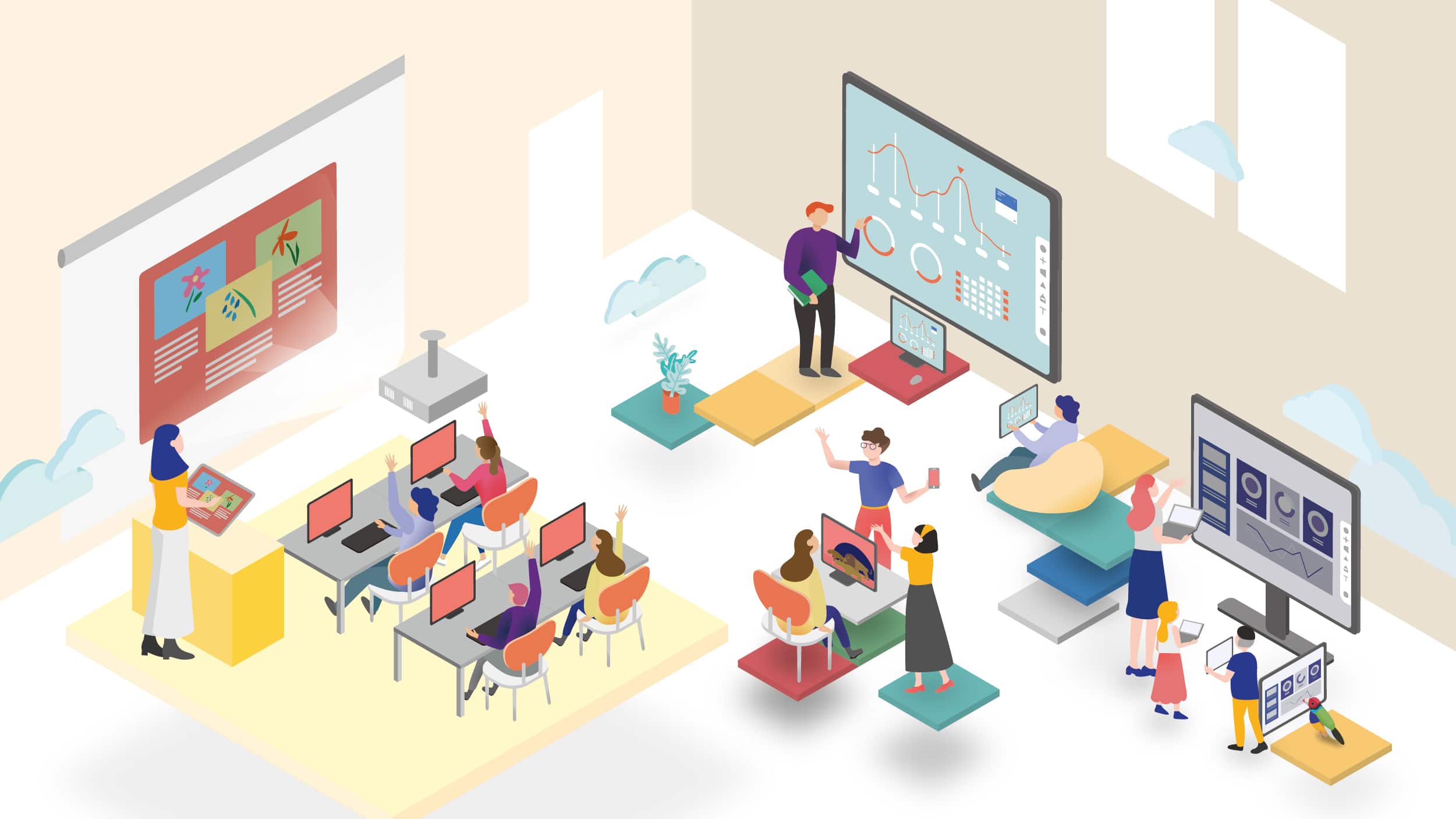types of technology in the classroom

The use of technology in classrooms has become increasingly popular in recent years, and it’s easy to see why. As a teacher, I have seen firsthand the many ways in which technology can enhance and improve the educational experience for students of all ages. From interactive whiteboards to online resources, there are a multitude of different types of classroom technologies available to educators today. In this post, we’ll take a closer look at some of the most popular options out there.
Interactive Whiteboards
Perhaps one of the most widely used types of classroom technology is the interactive whiteboard. These boards work by connecting to a computer or tablet, and allow teachers to project images, videos, and other multimedia content onto a large screen. They also usually come with special styluses or touch screens, which allow students to interact with the content directly. Interactive whiteboards can be an incredibly powerful tool for promoting collaboration and engagement in the classroom. They can also be used to create interactive quizzes, games, and other activities that help students hone their skills and knowledge.

Tablets and Laptops
Another type of classroom technology that has become increasingly popular in recent years is the tablet or laptop. These devices can be used to access online resources, create presentations, and collaborate with other students in real time. They also provide a degree of flexibility that traditional textbooks and paper-based assignments simply can’t match. Many schools have even started implementing “Bring Your Own Device” policies, which allow students to use their own devices in the classroom.

Online Resources
Another popular use of technology in the classroom is the use of online resources. Many teachers are now using websites, videos, and other web-based tools to supplement and enrich their lessons. These resources can be particularly helpful for students who are struggling with a particular concept, or who need additional practice outside of the classroom. They can also be used to create collaborative projects and presentations, which can help foster teamwork and communication skills.

Abstract
Technology has become an essential part of modern education, and it’s not hard to see why. From interactive whiteboards to online resources, there are a multitude of different types of classroom technologies available to educators today. These technologies can help promote collaboration, engagement, and knowledge retention among students of all ages.
Introduction
As a teacher, I have personally witnessed the ways in which technology can enhance and improve the educational experience for students. In this post, we’ll take a closer look at some of the most popular types of classroom technologies out there, and explore how they can be used to help students learn.
Content
Interactive whiteboards, tablets and laptops, and online resources are just a few examples of the many types of classroom technologies that teachers are using today. Let’s take a closer look at each of these technologies, and explore how they can benefit students.
Interactive Whiteboards
Interactive whiteboards are a powerful tool for promoting collaboration and engagement in the classroom. These boards work by connecting to a computer or tablet, and allow teachers to project images, videos, and other multimedia content onto a large screen. They also usually come with special styluses or touch screens, which allow students to interact with the content directly. This can be particularly helpful for hands-on learners, who may struggle to engage with traditional lectures and lessons. Interactive whiteboards can also be used to create interactive quizzes, games, and other activities that help students hone their skills and knowledge.
Tablets and Laptops
Tablets and laptops are another type of classroom technology that can be incredibly helpful for students. These devices can be used to access online resources, create presentations, and collaborate with other students in real time. They also provide a degree of flexibility that traditional textbooks and paper-based assignments simply can’t match. For example, students can use their devices to work on assignments from home, or to access online resources while on the go. Many schools have even started implementing “Bring Your Own Device” policies, which allow students to use their own devices in the classroom.
Online Resources
Online resources are another popular use of technology in the classroom. Many teachers are now using websites, videos, and other web-based tools to supplement and enrich their lessons. These resources can be particularly helpful for students who are struggling with a particular concept, or who need additional practice outside of the classroom. They can also be used to create collaborative projects and presentations, which can help foster teamwork and communication skills. Additionally, many online resources are interactive and engaging, which can help keep students interested and motivated throughout the learning process.
Conclusion
Technology has become an essential part of modern education, and for good reason. Interactive whiteboards, tablets and laptops, and online resources are just a few examples of how technology can be used to help students learn and succeed. By incorporating these technologies into their lesson plans, teachers can help promote collaboration, engagement, and knowledge retention among students of all ages.

Source image : modernconsumers.com

Source image : www.viewsonic.com

Source image : www.presentationproducts.com






